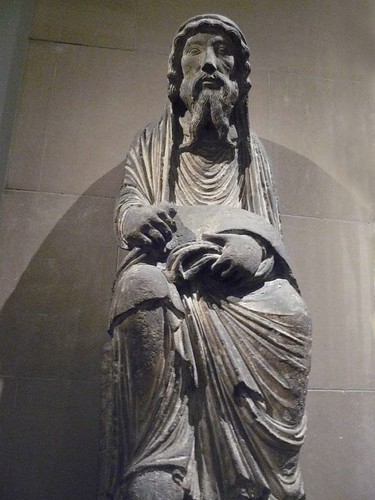
The cinematic world recently mourned the loss of Enzo Staiola, the unforgettable child actor whose soulful performance in Vittorio De Sica’s 1948 masterpiece, “Bicycle Thieves,” became an enduring symbol of post-war Italian neorealism. Mr. Staiola, who garnered international acclaim at the tender age of nine, died on June 4 in Rome at the age of 85. His death, confirmed by Emanuele Carioti, an Italian journalist and friend of the family, was attributed to complications from a fall. His passing marks the end of an era, as he was one of the last living connections to the pivotal neorealist period that redefined Italian film in the late 1940s and early 1950s.
“Bicycle Thieves,” known in Italian as “Ladri di biciclette” and sometimes as “The Bicycle Thief” in the United States, is routinely cited as one of the greatest films of all time. Mr. Staiola, who portrayed the steadfast 8-year-old Bruno, accompanied his father, Antonio Ricci, on a desperate quest to recover a stolen bicycle in impoverished post-war Rome. While Lamberto Maggiorani, a real-life factory worker, starred as the father, Mr. Staiola’s portrayal of Bruno became, in many ways, the emotional center of De Sica’s profound work. This article will delve into his life, his pivotal role, and the lasting impact of a film that shaped cinematic history.
Mr. Staiola’s unique journey from the streets of Rome to the silver screen, his experiences during the film’s production, and his eventual retreat from acting offer a compelling narrative that underscores the film’s authentic spirit. His legacy is not merely that of a child actor, but of a face that eloquently expressed the widespread hardships and resilient spirit of a nation grappling with the aftermath of war, a contribution that continues to resonate with audiences and critics worldwide.

1. **The Passing of Enzo Staiola and His Lasting Connection to ‘Bicycle Thieves’**Enzo Staiola’s death on June 4 in Rome, at the age of 85, brought forth a wave of remembrance for his singular and profound contribution to cinema. His passing, widely reported in the Italian press and subsequently confirmed internationally, marked the quiet farewell of an individual whose life, though mostly lived outside the limelight, was inextricably linked to one of the most celebrated films ever made. The cause of his death was due to complications from a fall, as confirmed by Emanuele Carioti, an Italian journalist and friend of Mr. Staiola’s family.
For many, Mr. Staiola remained forever etched in celluloid history as Bruno Ricci, the child with memorably big, expressive eyes who symbolized childhood innocence amidst the anguish of post-war Rome. His death served as a poignant reminder of the enduring power of “Bicycle Thieves” and the authentic human stories it championed. He was more than an actor; he was a living link to a specific moment in cinematic and historical time, a period of profound social commentary through film.
His role resonated so deeply that decades later, his visage would appear on Italian postage stamps, a testament to his lasting cultural impact. Even in retirement, working as a land-registry clerk, he continued to be recognized, with passers-by and journalists often approaching him to gaze into the eyes they remembered from his iconic close-ups. This constant connection, though sometimes tiring for Mr. Staiola, underscores the indelible mark his performance left on the collective consciousness.

2. **’Bicycle Thieves’: A Seminal Work of Italian Neorealism**Released in Europe in 1948 and in the United States a year later, Vittorio De Sica’s “Bicycle Thieves” immediately garnered widespread acclaim and established itself as a cornerstone of Italian neorealism. The film, adapted from an obscure 1946 novel by Luigi Bartolini, tells the harrowing yet tender story of Antonio Ricci, a struggling character who needs his bicycle for a new job hanging advertising bills in post-war Rome. When the bicycle is stolen, Antonio, with his young son Bruno in tow, embarks on a desperate and ultimately tragic search through the city streets.
Critics of the time hailed its profound impact. Upon its U.S. release in 1949, The New York Times critic Bosley Crowther called the film “brilliant and devastating.” The film’s unflinching portrayal of poverty, its use of nonprofessional actors, and its refusal to romanticize the harsh realities of the Roman streetscape were pioneering. Film historian Robert S.C. Gordon described it as “a fundamental staging post in the history of the European cinema,” solidifying De Sica’s position as a titan of Italian cinema before the advent of filmmakers like Michelangelo Antonioni and Federico Fellini.
Its critical success was matched by international recognition, with the film receiving an Academy Award in 1950 for most outstanding foreign language film. In 1952, “Bicycle Thieves” was even named the greatest film ever made in Sight and Sound’s critics’ poll, an indication of its immediate and profound influence. The film’s focus on the trials and tragedies of ordinary life, stripped of escapist entertainment, defined a new cinematic language that spoke directly to the human condition in a war-torn world.

3. **The Poignant Role of Bruno Ricci: An Emotional Anchor for a Generation**Enzo Staiola’s portrayal of Bruno Ricci is, for many, the very heart of “Bicycle Thieves.” As the staunch 8-year-old accompanying his father on a quest fraught with despair, Bruno’s character is depicted with a remarkable blend of poise and vulnerability. From his initial appearance as a “little man,” dressed in overalls and earnestly tending to his father’s bike like an adult mechanic, to his stoic endurance of rain, jeers, and the scorn of strangers, Bruno becomes more than just a companion; he evolves into his father’s emotional equal.
Bosley Crowther of The New York Times lauded Mr. Staiola’s performance, noting that he played Ricci’s “small son with a firmness that fully reveals the rugged determination and yet the latent sensitivity of the lad.” The film’s immense emotional impact, which resonated instantly with contemporary critics, is largely attributable to this powerful portrait of disillusioned innocence. Bruno’s wide-eyed presence as a witness to his father’s escalating humiliations, including the ultimate degradation of Antonio attempting to steal a bicycle himself, heightens the film’s pathos in a deeply effective manner.
Scenes like the one where Ricci, overwhelmed by frustration, slaps the little boy, were described by Crowther as “one of the most overpowering incidents in the film.” Bruno’s unwavering support and silent suffering through the streets of Rome, confronting the harsh realities of post-war poverty alongside his father, rendered his character universally relatable and heartbreaking. His performance spoke volumes through mere glances and expressions, conveying heartbreak, loyalty, and innocence without relying on theatrical flourishes, cementing his place in cinematic history as a truly unforgettable child actor.
Read more about: Enzo Staiola, Soulful Child Star of ‘Bicycle Thieves,’ Dies at 85, Leaving an Immortal Mark on Cinema

4. **A Serendipitous Discovery: Vittorio De Sica’s Unconventional Casting Choice**The story of Enzo Staiola’s casting in “Bicycle Thieves” has become the subject of extensive anecdote and myth, embodying the neorealist spirit of plucking non-professional actors from real life. Director Vittorio De Sica, renowned for seeking authenticity, had reportedly auditioned dozens of boys, lamenting, “Always they give me nice sweet boys. I would like a boy with very human eyes and a strange face.” His search for the ideal Bruno was so intense that he had already begun filming portions of the movie before the role was filled.
Mr. Staiola, in a 2023 interview with La Repubblica, offered his own vivid recollection of this serendipitous encounter. “I was coming back from school, and at a certain point I noticed this big car following me at walking pace,” he recounted. “Then this gentleman with gray hair, all dressed up, got out and asked me, ‘What’s your name?’ and I was silent. And he said, ‘But don’t you talk?’” Staiola, recalling his mother’s advice not to speak to strangers, replied, “I don’t feel like talking.” The man, who was De Sica, followed him home.
Despite De Sica’s fame – his parents immediately recognized him as a film star – persuading them to allow their son to act proved a challenge. “He sat at the table in our house and tried to convince them to let me act in his new film. But they didn’t want to,” Staiola recalled. It was his uncle who eventually took him to De Sica’s studio. De Sica, still determined, returned to the parents and made an “exaggerated sum” monetary offer of 300,000 lire for two months’ work. At that point, Staiola remembered, his father turned to him with a smile and declared, “If you don’t go to work tomorrow, I’ll kill you,” thus sealing his unexpected entry into cinematic immortality.

5. **The Rigors of Childhood Stardom: Enzo Staiola’s Experiences on Set**While Enzo Staiola’s performance in “Bicycle Thieves” is revered, his own memories of making the film were far from nostalgic. He candidly revealed the challenging nature of working with a demanding director like De Sica, stating in a 2023 interview, “De Sica was strict. He always told me, ‘Do this, do that.’ Sometimes he offended me.” This demanding environment, coupled with the unique constraints placed upon a child actor, colored his recollections of his time on set.
Beyond the director’s strictness, Staiola also spoke of the personal sacrifices involved. “As a kid, I could never play with my friends, because if I made a mark on my face I couldn’t make movies anymore,” he explained. This strict regimen meant forfeiting the normal joys of childhood for the demands of a film set, a trade-off he later described as a “real pain in the ass.” The inherent limitations on his freedom and spontaneous play highlight the often-unseen costs of child acting, particularly in a period lacking modern child welfare regulations in film production.
Furthermore, the cinematic process itself proved to be tedious for a young boy. Staiola noted that “the waiting times in cinema are very long,” finding the experience “a bit boring.” He even confessed that he would have preferred the bicycle consolation prize given to his rival during the casting process over winning the role itself, a sentiment that speaks volumes about his youthful priorities and the unglamorous realities behind the revered final product. His honest reflections demystify the romanticized image of child stardom, revealing the arduous discipline required for such an impactful performance.

6. **Crafting Raw Emotion: The Methods Behind Bruno’s Unforgettable Tears**One of the most indelible and emotionally resonant scenes in “Bicycle Thieves” involves Bruno weeping at his father’s profound humiliation. The raw, seemingly authentic tears Mr. Staiola produced for this pivotal moment have been the subject of considerable speculation and, at times, controversy, revealing the stark methods sometimes employed in early neorealist filmmaking. Catherine O’Rawe, a professor of Italian film and culture, notes that a “degree of mystery likewise surrounds the filming of the emotional climax.”
Director De Sica himself provided one account, claiming he attempted to make Mr. Staiola cry by pinching and slapping him. When these methods reportedly failed, De Sica stated he resorted to a more psychologically manipulative tactic: he secretly put cigarette butts in the boy’s pocket and then reduced him to tears by publicly accusing him of stealing them. This version of events, if true, highlights a distressing side of filmmaking practices from that era, prioritizing the dramatic outcome over the child’s well-being.
However, Mr. Staiola for the most part rejected this version of events. In various interviews, he offered alternative explanations, suggesting that De Sica sometimes used glycerin to stimulate his tears or blew smoke into his eyes to achieve the desired effect. Regardless of the exact method employed, whether through coercion, trickery, or artificial means, the result was undeniably powerful. Film critic Bosley Crowther called the scene where Antonio slaps Bruno and Bruno cries “one of the most overpowering incidents in the film,” a testament to the indelible impact Mr. Staiola’s emotional performance left on audiences, securing his “amazing contribution to Italian cinema.”

7. **A Career Beyond Bruno: Staiola’s Other Cinematic Appearances**While Enzo Staiola’s name remains inextricably linked to his singular performance as Bruno in “Bicycle Thieves,” his acting career did not end with that cinematic triumph. Following his breakout role, he went on to appear in a handful of other films throughout the 1950s, embarking on a brief but varied journey across Italian and even American productions. Though none of these subsequent roles garnered the same international acclaim or left as indelible a mark as his debut, they nonetheless represent a further chapter in his brief yet notable time in the film industry.
His filmography after “Bicycle Thieves” included a number of Italian features that offered him roles alongside some of the era’s prominent figures. Notably, he appeared in “Volcano” (1950) with the acclaimed Anna Magnani and “The White Line” (1950) alongside Gina Lollobrigida. He also shared the screen with Marcello Mastroianni in “Penne Nere” (1952) and with George Raft in “I’ll Get You for This” (1951), sometimes known as “Lucky Nick Cain.” Other Italian credits from the period included “Hearts Without Borders,” “Guilt is Not Mine,” and “A Tale of Five Women,” according to various records.
Staiola’s talent even caught the attention of Hollywood, leading to a small but memorable role in Joseph L. Mankiewicz’s 1954 drama, “The Barefoot Contessa.” In this production, he acted alongside established stars such as Humphrey Bogart and Ava Gardner, offering him a glimpse into a different stratum of international cinema. However, despite such opportunities and the “about 20” films he reportedly acted in, his career as a child actor eventually tapered off. He famously recounted that director Vittorio De Sica, who discovered him, never offered him another role, remarking, “De Sica was like that; he discovered you and then that was it.” Offers from Hollywood were also reportedly declined by his mother.
With the natural progression of adolescence, and the arrival of puberty, the demand for Staiola’s distinctive youthful presence waned. His last known appearance in a film was a small part in Flavio Mogherini’s 1977 production, “The Girl in the Yellow Pyjamas.” Ultimately, no subsequent performance ever approached the global recognition or enduring cultural significance of his portrayal of Bruno, solidifying his status as a remarkable one-hit wonder of cinematic history.
8. **Transition to a ‘Normal Life’: From Child Actor to Public Servant**Following his relatively brief but intense foray into the world of cinema, Enzo Staiola made a conscious and definitive pivot toward a life outside the glare of public attention. By the age of 15, he had essentially retired from acting, choosing instead a path that he would describe as “very normal.” This transition saw him exchange the unpredictable rhythms of a film set for the steady, structured routines of public service, a move that brought him a sense of stability and normalcy he seemed to crave.
Mr. Staiola pursued an education, graduating from what he referred to as a “technical institute.” This academic foundation prepared him for a career that would be far removed from the dramatic arts. In the 1970s, he successfully took the state examination to become a land-registry clerk, a profession he would diligently maintain for many years. Additionally, he dedicated a period of his life to teaching mathematics, further contributing to his community in a quiet, unassuming capacity.
His personal life, too, settled into a pattern of stability. The public housing apartment in the Roman neighborhood of Garbatella, which his family received after the release of “Bicycle Thieves,” became his lifelong residence. After retiring from his government position, he continued to reside there, often frequenting a local cafe in Garbatella where he met his wife, Anna, who later predeceased him. He is survived by their son, Andrea, creating a narrative of a man deeply rooted in his community and family, far from the transient nature of early stardom.
This deliberate retreat from the film industry underscored a clear preference for a conventional existence. His choice to become a clerk and a teacher, rather than pursuing continued acting opportunities, reflected a pragmatic approach to life that valued consistent employment and community integration over the fleeting allure of fame. It was a testament to his grounded nature that he found fulfillment in these roles, defining his adult life away from the spotlight.
9. **Reflections on Stardom: A Child’s Perspective on Movie-Making**Enzo Staiola’s recollections of his time as a child actor in “Bicycle Thieves” were notably devoid of the nostalgic sentiment often associated with such iconic experiences. In a candid 2023 interview, he revealed a pragmatic, almost unromantic perspective on his early stardom, indicating that he had “no qualms” about stepping away from moviemaking. His memories were shaped more by the demanding nature of the work and the personal sacrifices it entailed than by any perceived glamour.
He frequently articulated the challenging aspects of his childhood acting career, stating unequivocally that “it was a real pain in the ass.” A primary grievance was the restriction on his childhood play: “As a kid, I could never play with my friends, because if I made a mark on my face I couldn’t make movies anymore.” This constant vigilance meant forfeiting spontaneous childhood joys for the sake of an unblemished screen presence, a trade-off that clearly left a lasting impression. The tedious nature of film production also weighed on him, as he noted, “the waiting times in cinema are very long,” rendering the experience “a bit boring” for a young boy.
Furthermore, his relationship with director Vittorio De Sica, while ultimately fruitful for cinematic history, was characterized by strictness from Staiola’s perspective. “De Sica was strict. He always told me, ‘Do this, do that.’ Sometimes he offended me,” he recalled, painting a picture of a demanding set environment. His youthful priorities were also quite telling, as he confessed that he would have preferred the bicycle offered as a consolation prize to his rival during the casting process over winning the role itself, highlighting his innocent, grounded desires at the time.
In his later years, Staiola reflected on his fame with humility and a touch of bewilderment, wondering why De Sica had chosen him. “Maybe he liked the look in my eyes,” he mused in 2016, adding, “I think De Sica picked me because I was just an ordinary person. Poverty was all around us, and I represented poverty.” These reflections underscore his view of his brief period of celebrity as an “exceptional period” within an otherwise “very normal life,” maintaining a down-to-earth perspective despite his immortalized performance.
10. **The Narrative Core: The Father-Son Bond and Post-War Italian Struggle**At the very heart of “Bicycle Thieves” lies the profoundly moving narrative of a father and son, their relationship illuminated by the stark backdrop of impoverished, post-World War II Rome. The film transcends a simple tale of a stolen bicycle, transforming into a poignant exploration of resilience, dignity, and the unbreakable human spirit in the face of overwhelming adversity. It is this core dynamic, coupled with its unflinching neorealist portrayal of the era, that cemented the film’s enduring power and relevance.
Enzo Staiola’s portrayal of Bruno Ricci is central to this emotional resonance. As Antonio’s steadfast 8-year-old companion, Bruno serves not merely as a witness but as an emotional mirror, amplifying the weight of his father’s despair and humiliation. The audience’s connection to the father’s quest becomes immeasurably deeper through the eyes of the “plucky boy with expressive eyes.” Scenes such as Bruno’s stoic endurance of rain and the scorn of strangers, or his silent vigil as his father succumbs to desperation, underscore his role as Antonio’s emotional equal, a powerful testament to their shared burden.
Director Vittorio De Sica’s commitment to Italian neorealism—employing nonprofessional actors and refusing to romanticize the harsh realities of the Roman streets—rendered this narrative utterly authentic. The film’s frank portrayal of poverty, where a bicycle represents the precarious thread of a family’s survival, allowed Mr. Staiola to become a living symbol. As he himself observed, “Poverty was all around us, and I represented poverty,” a statement that perfectly captures the socio-economic authenticity he embodied.
Ultimately, the film’s emotional climax, culminating in Antonio’s attempt to steal a bicycle and Bruno’s heartbreaking observation, followed by their final walk hand-in-hand through a crowd, remains one of cinema’s most iconic and deeply affecting moments. This powerful imagery, stripped of theatrical artifice, conveys the universal themes of struggle, loyalty, and the quiet dignity found even in profound defeat, securing the film’s place as a masterpiece that continues to resonate across generations.

11. **Recognition and Remembrance: Enzo Staiola’s Enduring Cultural Mark**Despite Enzo Staiola’s retreat from the film industry and his insistence on leading a “normal life,” his singular performance in “Bicycle Thieves” ensured his lasting recognition and an enduring cultural mark. His portrayal of Bruno Ricci transcended the boundaries of a simple acting credit, embedding itself into the collective consciousness as an emblem of post-war Italian resilience and the raw power of neorealist cinema. His visage, particularly his “memorably big, expressive eyes,” remained a touchstone for many, decades after the film’s release.
“Bicycle Thieves” itself garnered widespread international acclaim, solidifying Staiola’s place within its legacy. It received an Academy Award in 1950 for most outstanding foreign language film and was notably named the greatest film ever made in Sight and Sound’s critics’ poll of 1952, an early testament to its profound influence. The film’s status as a routinely cited masterpiece directly amplified the significance of Staiola’s contribution, elevating his performance beyond that of a mere child actor.
Perhaps one of the most unique forms of recognition for Mr. Staiola came in 1988, when Italy issued a postage stamp bearing the image of the young Enzo Staiola. “Not bad, eh?” he remarked to La Repubblica, adding, “Nice recognition.” This honor speaks volumes about how deeply his image had become ingrained in Italian cultural identity. Even in his retirement, working as a land-registry clerk, he continued to be recognized, with passers-by and journalists often approaching him to gaze into the eyes they remembered from his iconic close-ups, a testament to the indelible mark his performance left.
Film historian Catherine O’Rawe aptly summarized his impact, stating that Mr. Staiola made “an amazing contribution to Italian cinema,” giving a performance that is “absolutely unique, and which is one of the reasons people still go back to that film so much.” His death marked the quiet closing of an era, as he was one of the last living connections to the pivotal neorealist period, underscoring the enduring significance of his work and his permanent place in cinematic history.

12. **A Quiet Farewell: The Immortalization of a Non-Professional’s Singular Performance**On June 4, Enzo Staiola, the unforgettable child actor whose soulful performance became synonymous with “Bicycle Thieves,” passed away in Rome at the age of 85. His death, confirmed by Emanuele Carioti as due to complications from a fall, marked a quiet but heartfelt farewell to an individual whose life, though mostly lived away from the public eye, was inextricably linked to one of cinema’s most celebrated achievements. His passing signified the end of a living connection to a pivotal era of filmmaking, leaving behind an artistic legacy that defies its brevity.
Mr. Staiola’s status as a non-professional actor, plucked from the streets of Rome, lent an unparalleled authenticity to his portrayal of Bruno Ricci. This lack of formal training, combined with De Sica’s neorealist approach, allowed for a raw, unvarnished depiction of childhood innocence and resilience amidst hardship. It was precisely this natural, unstudied quality that made his performance so profoundly affecting and, ultimately, immortal. He was not merely acting; he was, in a profound sense, representing the lived experience of a generation.
His “singular” and “unique” performance ensured his place in cinematic history. The indelible mark he left on the collective consciousness stemmed from his ability to convey immense emotion and complex human experience through subtle glances and expressions, speaking volumes through silence. This powerful contribution, achieved at such a young age and with such seeming effortlessness, continues to resonate with audiences, ensuring that Bruno Ricci remains one of the most recognized and cherished child characters in film.
Enzo Staiola may have consciously stepped away from the limelight, but his portrayal of Bruno lives on, a quiet testament to childhood resilience in a broken world. His legacy is not one of sustained stardom, but of a momentary, incandescent brilliance that shaped cinematic language. Immortalized within the black and white frames of “Bicycle Thieves,” his performance continues to speak to generations, embodying the authentic human stories and the enduring power of Italian neorealism, ensuring his memory, and Bruno’s, will never truly fade.





